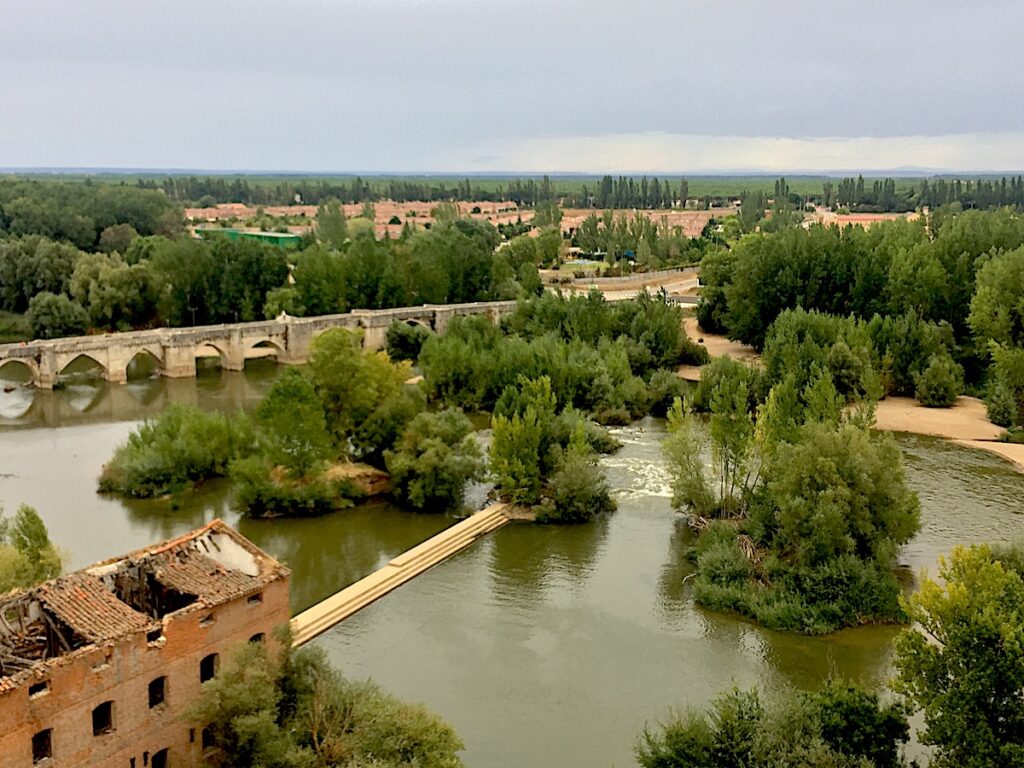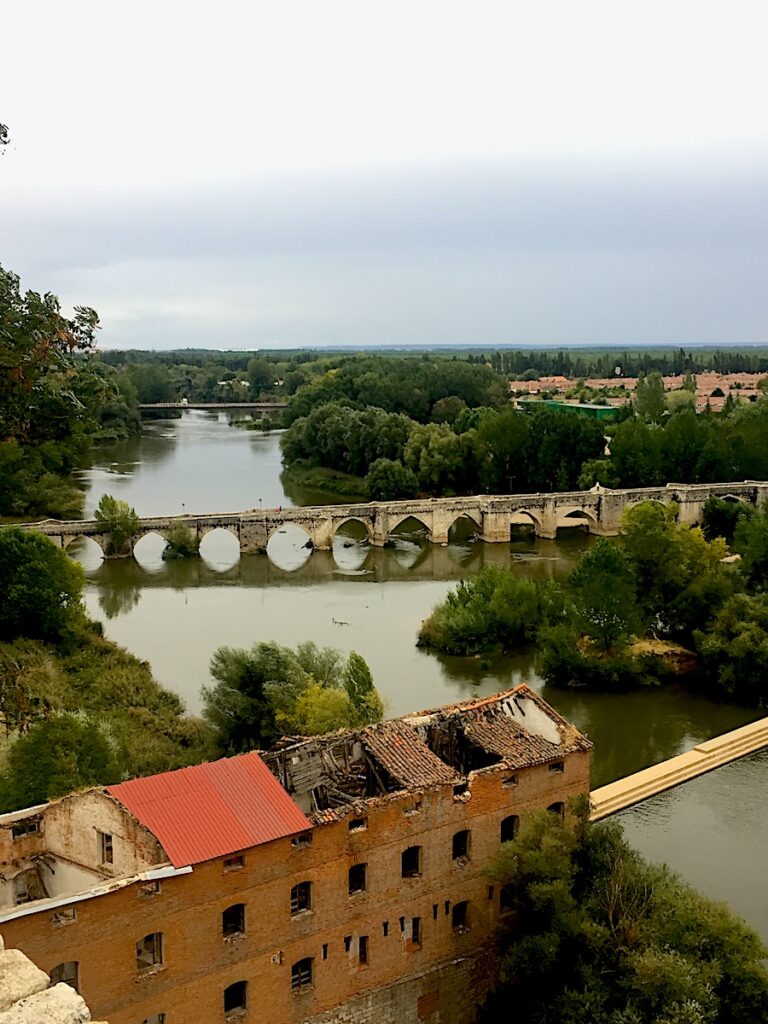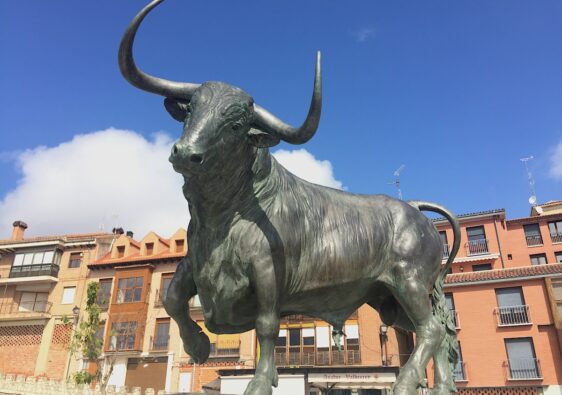October 24th, 2020
Tordesillas, Spain
Regions are closing borders and curfews are in place.
Before I left the islands, I would meet my big-smiled, bouncy haired friend Esther at the beach. We played card games, went swimming, and talked about life. One day just before I left for mainland Spain, she had this lightbulb moment, “AHHH, claro! Que yo tengo un buen amigo en Valladolid!”
She pulled out her phone and over videochat, sitting on the beach in Gran Tarajal, I met Emilio. Emilio lives in Valladolid but works during the week outside of the city. On his return trip from work for the weekend he passes through Tordesillas. And thus began my Fridays with Emilio.
He’s been a gracious host and I am starting to understand, somewhat, the lay of the land. However, I’m not sure if there will be more Fridays with Emilio. Covid is shutting things down once again. A curfew has been put into place and people rush back to their homes hiding themselves away from 10pm – 6am each day. This restriction complicates Emilio’s stop into Tordesillas, and so for now our Fridays have been suspended.
Earlier this month they shut down the borders of Madrid, and most of the Autonomous Regions seem to be following suit, I know that the region I live in, Castilla y Leon, has shut its borders. As things become more restricted, we are all concerned we may be confined to our homes, again—let’s hope not.
But before things shut down, over the last month I was grateful to be guided by Emilio to a few places nearby: Simancas, Toro, and Castronuño. Bear with me as I attempt to weave a touch of history in with my 21st Century visit.
Simancas:

Simancas is situated on a hill above the Duero Valley. The Moors built a protective fortress at the beginning of their invasion of the Iberian Peninsula in 711 A.D. As you walk away from the fortress to the bottom of the hill you cross the medieval stone bridge which overlooks the union between the river Pisuerga and the Duero. Simancas is It is only 18km from where I live in Tordesillas, and it is also along the Camino de Santiago route.
When the Moors entered Spain they displaced the primarily Christian Visigoths. However, there remained factions of Christians who constantly battled the Moors and finally, in 939 the Moors were defeated in Simancas, and once again, this small region came under Christian rule.
During the Moorish rule of Simancas, the Arabs built an impressive fortress which over history has been refurbished and used for several different means—after Arab rule it was turned into a prison under the Catholic Monarchs (1474 – 1516). Under Felipe II (1527 – 1598) it became, and remains, one of Europe’s most important libraries of historical archives. Today, encased in the walls if this inspiring fortress are over 35 million archived documents beginning from the XVI Century, including some present day archives. This library is a haven for history buffs, researchers, and students of many specialties.

Today, as I try to visit, the doors are shut. A big sign reiterates the painful reality—“Due to Covid, all libraries are currently closed to the public.”
I must be patient.
Simancas has another curious tale to tell, that of its possible name origin. It is said that the Vacceos, the Pre-roman inhabitants, referred to this region as Septimancas—and, though this is possible, and even closer to probable, the more, shall I say, “tragic-romantic” story is one that reinforces the belief of the ‘evil Arabe’ and the ‘pious Catholic’.



For complicated reasons that so many monarchs have battled against— power plays– a certain Mauregato became King of Asturias from 783 – 789, with the supposed help and support of Abderramán I, The Emir of Córdoba. The Emir required payment for his support. He demanded 100 Doncellas—50 perfect virgins of noble birth and 50 perfect virgins of common birth – to be given to him as tribute.
These virgins were selected by lottery from the regions around the Kingdom. Simancas was to produce 7 ‘perfect’ young women to give to the Emir. The story goes, that the night before the young women were to be presented, they were secluded together. Apparently, during this confinement, one of the young women extracted a knife from her sleeves. One by one the Doncellas began to disfigure their faces and finally, each young woman cut off one of her hands, leaving them manco and thus undesired.
When the Emir was presented the young ladies, he exclaimed,
“Si mancas me las dáis, mancas no las quiero.” Simancas
“If you give them to me one-handed, one-handed I don’t want them.”

The women were heroines against the Arabe oppressor! They chose to become one-handed (manco) rather than go with the Emir to his harem. This folklore is another possible origin of the name Simancas.
Today, these women continue receiving adulation and are celebrated each year on the 6th of August the festivities of the Patron Saint of Simancas.
They have their own bronze statue erected in their honor.
TORO:
36 Km to the East of Tordesillas we leave the region of Valladolid to enter Zamora and the town of Toro. The bodegas and viticulture of Toro dominate its popularity in current times, and for good reason.



If you can get your hands on a bottle of vino tinto with “Denominación de Origen Toro” listed on the label, get it!
And if you can get a bottle from the Divina Proporción Bodega, even better!!
I tried their “madremía” label, and, wow, Madre mía, was it delicious!
Toro has been a pueblo of importance for different reasons over its history. In 1160, the Colegiata de Santa Maria la Mayor was constructed as this Castillan town began to grow into one of the most important areas politically, religiously, and strategically throughout the middle ages.

The Zamorano region shares a border with Portugal. With Toro as one of the most import towns in Zamora during the late middle ages, this town became the venue for many of the conflicts between the two countries.

These conflicts were especially acute and of immense importance to a young woman who would soon become Queen, the catholic Queen, Isabel I.
Her story is fascinating. I am intrigued by this woman, her tenacity, her strength, and her vision. She knew what she wanted, and she was headstrong in her convictions. Despite being a woman, despite the odds against her, she was gutsy and fiery and ready to conquer the world! — and eventually she would!

Isabel was the oldest child of King Juan the II of Castile and Isabel of Portugal, but she had an older half-brother, Enrique, and was thus second in line for the throne. As luck would have it, King Juan and Queen Isabel had another child, a son this time which displaced daughter Isabel to third in line to the throne. This is to say that Isabel was not raised nor ever considered to be ruling material, she was to be married off to a powerful family in Portugal in order to maintain a amicable relationship between the two countries, much as her own mother had done by coming to Spain from Portugal.

But the story gets twisted, and Isabel’s younger brother dies close after his wedding night, raising Isabel to second in line— however, her half-brother, King (at this point) Enrique IV of Castile, was married and Castile anxiously awaited a new heir— the heir never came, well, sort of. It was well known in the court that the King was unable to sire, but his wife took things into her own hands and a child, a girl, was born. This began the fight for the throne for Isabel was now officially next in line for the throne as the child born to King Enrique IV was a bastard, NOT of his impotent loin.
The king however lived in denial and accepted the child as his own and fought to keep the throne for her. But Isabel had the support of many nobles of Castile who believed her the rightful heir, and denounced Juana as a bastard.
With all this fuss, King Enrique IV decided to marry Isabel off to an older noble from Portugal and have her confined until the ceremony. Well, long story short, she escaped!
She found an eligible young man of royal line, the soon to be King Ferdinand II of Aragón. She wrote him a series of letters and they eloped not long after.

The nobles in different areas of Castile either were for Isabel or for Juana. Toro and Castronuño were two of the places that were more in support of Juana, and at the time these areas were of great importance, Isabel needed their support.
Eventually Isabel was the victor, but not without much conflict and continual tensions between Portugal and Spain, as well as many of the nobles of Toro and Castronuño. But the marriage of Isabel to Ferdinand would eventually create the union of the Iberian Peninsula and form the Spain we know today— yes, with constant battles, questionable means, and from a modern point of view:
Very disturbing actions of racism—expulsion of the Jews and Arabs from Spain.
Religious discrimination—the horrific Spanish Inquisition
and
The cultural destruction based on greed and religious righteousness—The “Discovery” of the New World.

For good or for bad, our world was changed due to the tenacity of this young woman, it’s incredible to fathom that her vision for a unified Spain altered our world forever as remain in constant conversation with the past.
Castronuño

I close today’s correspondence on a bit more uplifting note, I hope. When I went to Castronuño, I was hungering for that feeling of space, of connection to something beyond me. I needed to be with nature. On the island, I was so used to living with the birds flying over my terrace, the sound of waves crashing at the beach as I drifted off to sleep at night, the full moon bright and a big sky riddled with stars– but here, in my apartment in town I don’t have that constant conversation with the non-manmade world. I was relieved to join in the conversation again.
Today Castronuño is a natural reserve. The small pueblo sitting above the Duero River is unassuming and quaint.

The town itself houses the Roman style church, Santa Maria del Castillo. The original church was constructed in the 13th century with reforms into the XIV.
But I didn’t go to Castronuño for the church, though it is a lovely building, I went to take a walk along the river.

This natural reserve is home to a plethora of birds! Great Heron, eaglets, el Milano, and many others.
In the late fall afternoon, under the golden rays of the day coming to a close, I felt a calm. A peace which filled me with a sense of centeredness. Being with nature does that, it reminds us we are all connected and in constant conversation.

I hope you are all doing well during these Covid days.
At times it’s difficult, but I hope you are sensing the constant connection that is.
Even when we think we are separate, there is always a conversation to be had.
Warmly,
Melanie
Photo credit:
“Bernat pescaire – Garza real – Grey Heron (Ardea cinerea) 4” by fturmog is licensed under CC BY-NC-SA 2.0
“aguilucho lagunero 02” by ferran pestaña is licensed under CC BY-SA 2.0
“Black Kite” by – Ariful H Bhuiyan – is licensed under CC BY 2.0
https://es.wikipedia.org/wiki/Abderram%C3%A1n_I
“Arte Urbano ‘historico'” by jacilluch is licensed under CC BY-SA 2.0
“File:Aragonés o medio real de plata de Fernando el Católico.jpg” by CNG is licensed under CC BY-SA 3.0














WOW! Dear Heart, I hope you will write a book someday! You are an excellent writer, and your ability to share history is fantastic, not to mention your incredible photographs! So glad to read your works! Much Love Always, Sayward
Ah, my dear friend Sayward! Thank you for your inspiring words of encouragement! I’ll keep writing if you keep reading!!